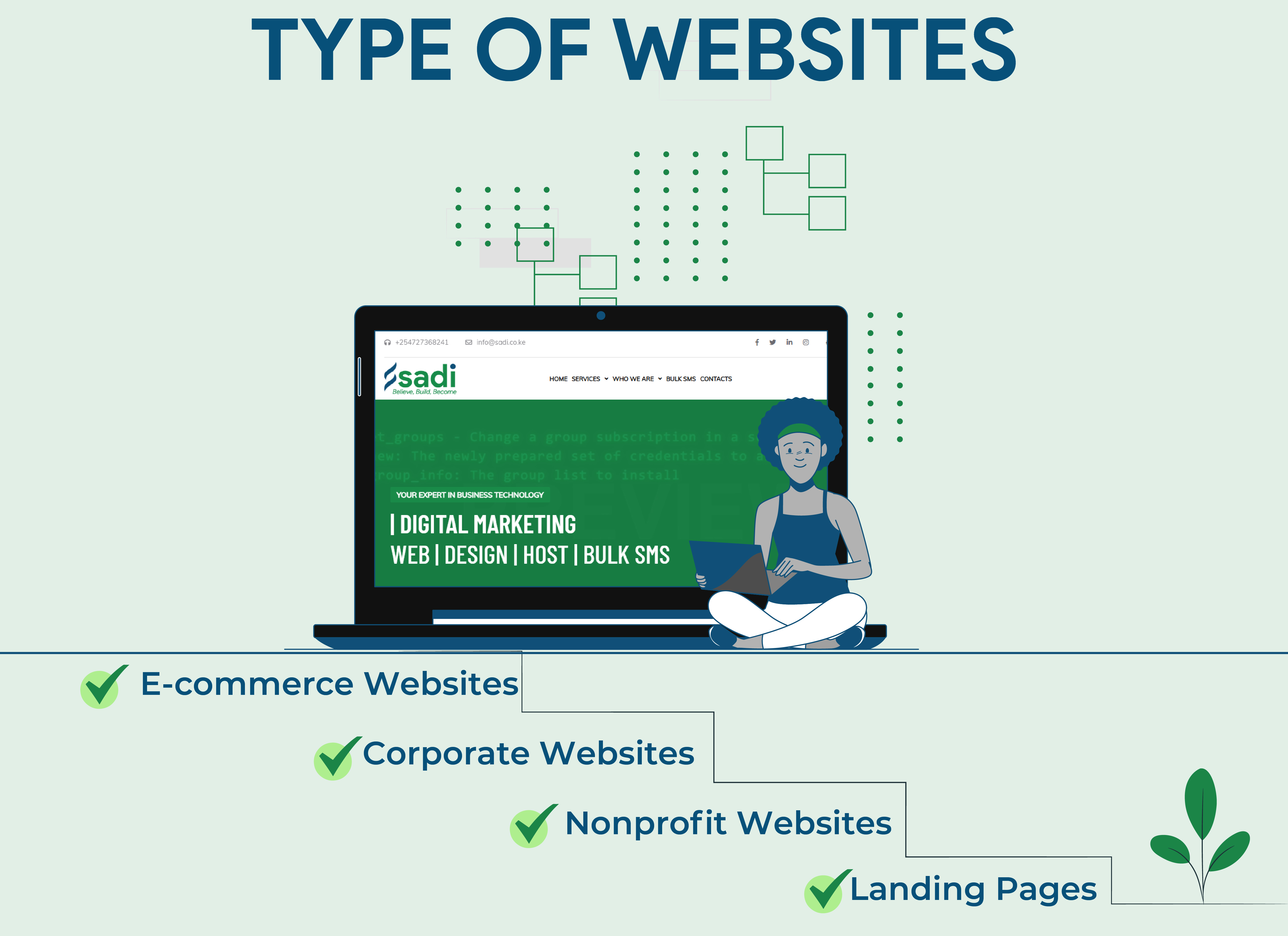info@sadi.co.ke
+254727368241
In the digital age, websites serve various purposes, from offering information to engaging users in interactive experiences. Understanding the different types of websites can help businesses, individuals, and organizations choose the right platform for their needs. In this blog, we’ll explore the various types of websites and their specific functionalities.
E-commerce websites are designed for buying and selling products or services online. They allow businesses to showcase their products, manage inventory, process transactions, and provide customer support. Examples of e-commerce websites include Amazon, eBay, and Shopify stores. These websites are equipped with shopping carts, secure payment gateways, and user accounts to facilitate a seamless shopping experience.
Corporate websites serve as the online face of a company or organization. Their primary purpose is to provide information about the business, including its history, values, products, services, and contact information. Corporate websites often feature a clean, professional design and are tailored to reflect the company’s brand image. These websites help build trust with potential clients and partners.
Portfolio websites are used by individuals to showcase their work, skills, and accomplishments. Artists, photographers, designers, and writers typically use portfolio websites to display their projects and attract potential clients or employers. A well-designed portfolio website highlights the individual’s expertise and acts as a digital resume, often featuring a gallery, case studies, and contact information.
Blog websites are platforms for publishing articles, opinions, and other forms of written content. They can be personal, professional, or business-oriented. Blogs allow writers to connect with their audience, share insights, and build a community around a specific topic or interest. Popular blogging platforms like WordPress and Medium make it easy to publish and manage content regularly.
Educational websites are designed to provide knowledge and learning materials. These websites can offer courses, tutorials, articles, and videos to help users learn new skills or gain insights on specific topics. Examples include online learning platforms like Coursera, Khan Academy, and Udemy. Educational websites are often used by schools, universities, and training institutions to facilitate distance learning.
Social media websites are platforms that enable users to interact, share content, and build connections with others. These websites are designed for communication, entertainment, and networking. Examples include Facebook, Instagram, Twitter, and LinkedIn. Social media websites are often used by individuals and businesses to share news, ideas, photos, and videos.
Nonprofit websites are focused on raising awareness for social causes and supporting charitable organizations. These websites typically feature information about the organization’s mission, upcoming events, donation options, and volunteer opportunities. Nonprofit websites play a critical role in mobilizing support, raising funds, and spreading information to a wider audience.
News websites focus on providing the latest information about current events, politics, sports, and entertainment. These websites typically feature articles, videos, and live updates to keep users informed. Major news outlets like CNN, BBC, and The New York Times operate news websites that provide real-time coverage and in-depth analysis of events happening around the world.
Government websites are created by local, regional, or national governments to provide citizens with access to important services, information, and resources. These websites often include features like online bill payments, forms, news updates, and contact details for government agencies. They are essential for ensuring transparency, accessibility, and efficient communication between the government and the public.
A landing page is a single web page designed to convert visitors into leads or customers. These pages are typically used for marketing purposes, such as promoting a product, service, or event. A landing page usually includes a call-to-action (CTA), such as a sign-up form or a purchase button, and is designed to capture the attention of visitors and guide them toward completing a specific action.
Websites come in various types, each serving a unique purpose. Whether you’re looking to start an online store, share your personal insights, or promote a cause, understanding the different types of websites is key to creating a successful online presence. By identifying your goals and audience, you can choose the right type of website to meet your needs.
 November 28, 2024 - BY Admin
November 28, 2024 - BY Admin